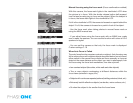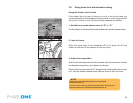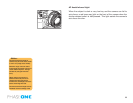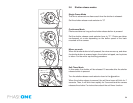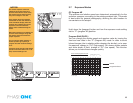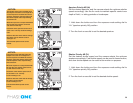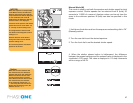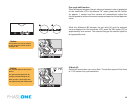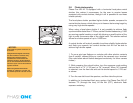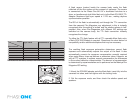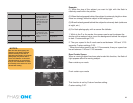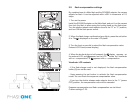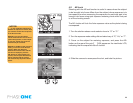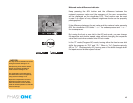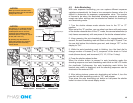
39
3.8 Flash photography
Phase One 645 AF is equipped with a horizontal local-plane metal
shutter; this makes it unnecessary for the user to acquire lenses
equipped with central shutters, though it still is possible to use these
lenses optically.
The focal-plane shutter provides higher shutter speeds, compared to
central shutter lenses, which allow you to freeze a fast moving target by
using very high shutter speeds.
When using a focal-plane shutter it is not possible to achieve ash
synchronization faster than 1/125sec, as the 2 shutter blades at e.g.1/500
are moving parallel creating a small slit allowing a small fraction of the
light to enter the sensor area of the digital back. This shutter method
allows for shutter speeds of up to 1/4000 sec.
A central shutter will make it possible to achieve slightly higher shutter
and ash sync speeds, but central shutters but will not be able to
achieve high shutter speed.
1. To use a grip type ashgun or a strobe with other electric contacts
than X contact, connect the sync. cord to the camera’s sync. terminal.
(See note below about ashes designed exclusively for other camera
makes.)
2. While pressing the unlock button, turn the exposure mode setting
dial and set it to “X” (1/125 sec.) or “M” (manual). When “M” (manual)
is selected, turn the front dial and set the shutter speed to 1/125 sec.
or slower.
3. Turn the rear dial to set the aperture, and then take the picture.
In addition to its standard ash sync system, the Phase One 645 AF
features TTL (through the lens), off the lm (OTF), electronic ash
exposure metering.
NOTICE:
This camera’s synchro contact is an
X contact.
Using flashes designed exclusively
for other makers of cameras may
damage the camera’s internal
mechanisms if connected to the
camera’s hot-shoe. In this situation,
use an off-camera flash bracket and
connect a sync. cord to the camera’s
synchro terminal.
When using flashes with a flash
duration of 1/500 sec. or longer, set
the shutter speed to 1/30 sec. or less.



